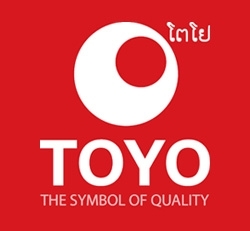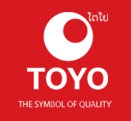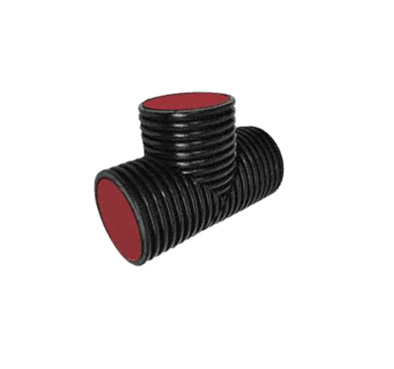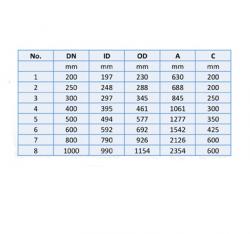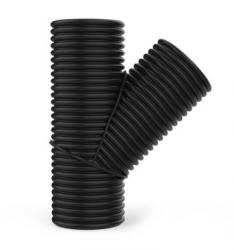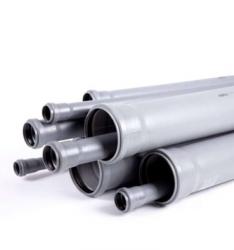.png)
HDPE Tee Fitting
Detailed Characteristics
1. Structural Design:
-
The HDPE tee fitting features a classic “T” shape, designed to connect three pipelines — one inlet and two outlets (or vice versa).
-
It is used to split or combine flows, especially in complex pipeline networks.
2. Material Specification:
-
Made from High-Density Polyethylene (HDPE) — a thermoplastic polymer known for:
-
High tensile strength
-
Excellent flexibility
-
Resistance to environmental stress cracking
-
Inertness to a wide range of chemicals
-
3. Size Availability:
-
Available in a broad range of diameters, from 200 mm up to 1000 mm, making it suitable for medium to large-scale infrastructure projects.
4. Pressure and Impact Resistance:
-
Capable of withstanding high internal pressures.
-
Offers superior impact resistance, even in sub-zero temperatures.
-
Maintains structural integrity in both buried and above-ground installations.
5. Environmental Durability:
-
Resistant to:
-
Corrosion, both chemical and electrochemical
-
UV degradation from prolonged sun exposure
-
Abrasion and rough handling
-
-
Does not rust, rot, or support biological growth such as algae or fungi.
6. Longevity and Maintenance:
-
Designed for a service life of over 50 years, under normal operating conditions.
-
Minimal maintenance requirements thanks to the material's non-reactive properties and leak-proof welding methods.
Expanded Applications
1. Water Supply Systems:
-
Used extensively in municipal waterworks, housing developments, and high-rise buildings.
-
Ideal for branching from a main line to multiple zones (e.g., residential blocks or buildings).
2. Agricultural and Irrigation Projects:
-
Enables water distribution from main lines to field pipelines.
-
Compatible with drip irrigation and sprinkler systems, helping improve water management efficiency.
3. Industrial and Chemical Transport:
-
Suitable for transporting:
-
Aggressive fluids and industrial chemicals
-
Slurries and waste water
-
-
Widely used in factories, processing plants, and chemical parks.
4. Mining and Slurry Applications:
-
Withstands the abrasive nature of materials such as sand, gravel, and ore in mining operations.
-
Can handle high-velocity flow in rugged environments.
5. Wastewater and Drainage Systems:
-
Supports flow redirection in sewerage systems and stormwater drainage.
-
Prevents leaks and contamination due to fusion-welded connections.
6. Compatibility with Jointing Techniques:
-
Supports multiple jointing methods:
-
Butt fusion welding
-
Electrofusion welding
-
Mechanical fittings (if required)
-
-
Ensures strong, seamless, and leak-free connections across the system.
7. Installation Efficiency:
-
Lightweight compared to metal fittings, reducing handling and installation costs.
-
Suitable for installation in remote, rural, or hard-to-reach areas without requiring heavy machinery
.jpg)
.jpg)


